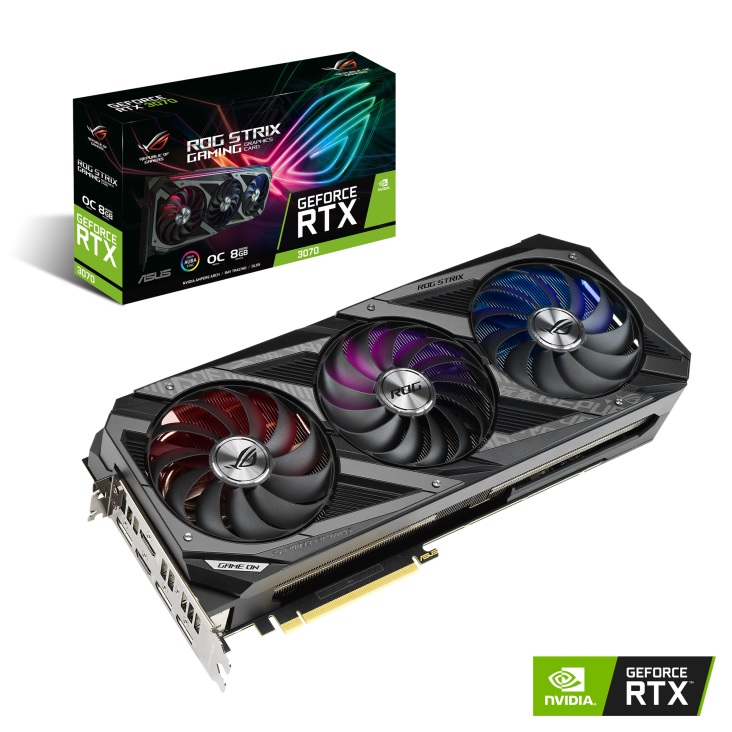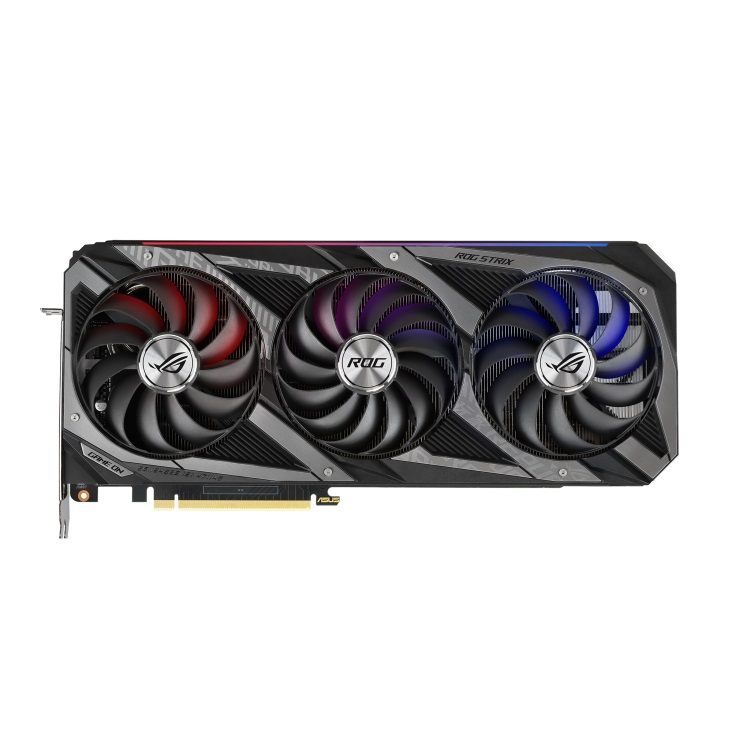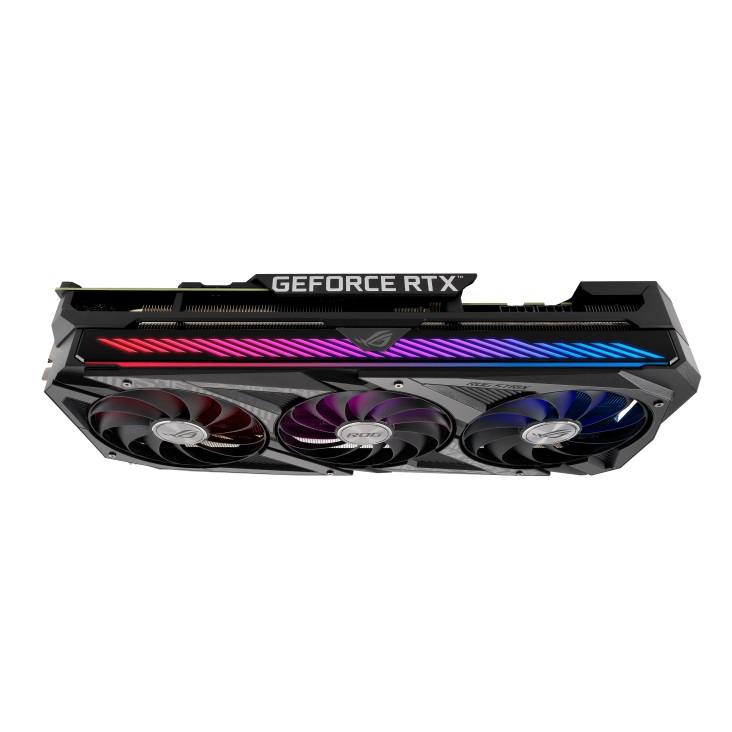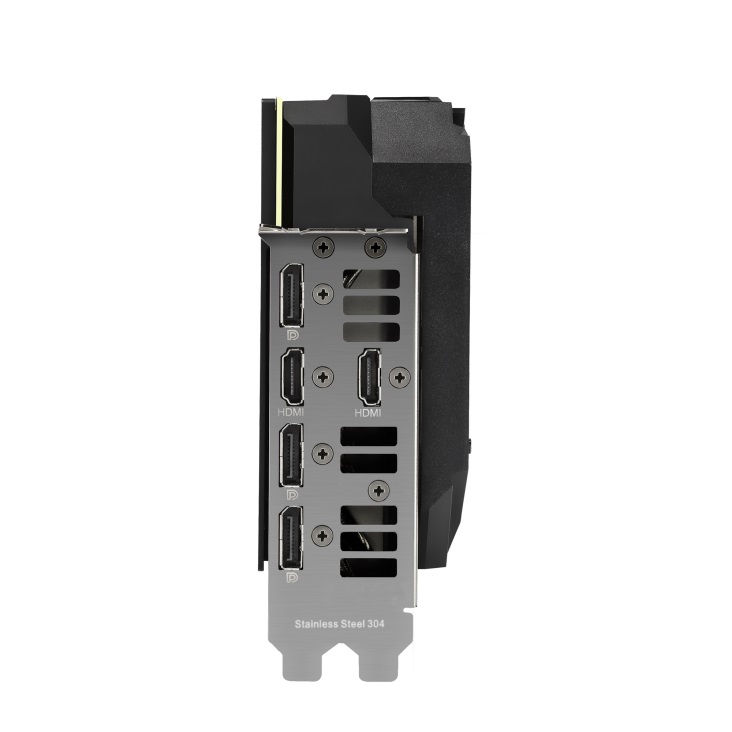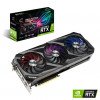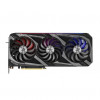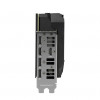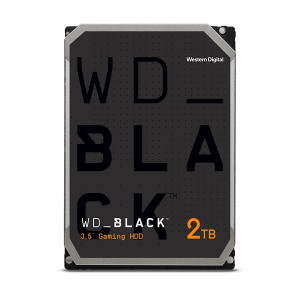TAKE FLIGHT
From top to bottom, the ROG Strix GeForce RTX™ 3070 has been radically improved to accommodate the impressive new Ampere chips from NVIDIA and to deliver the next wave of gaming performance innovation to the market. A fresh design and more metal surrounds a grouping of Axial-tech fans. Last gen’s uniform fan layout has been usurped by a new rotation scheme and specialized roles for central and auxiliary fans. Below the blades, a larger, more impressive heatsink is ready for the most demanding thermal loads. The PCB has some new tricks up its sleeves, and even the backplate has received some performance-boosting changes. You’ve been waiting for the latest and greatest in GPU design – and this is it.
AXIAL-TECH UPGRADES
Our Axial-tech fan design has been optimized for a new, larger heatsink that features more fins and surface area than last gen. The blade count has been increased on all three fans, with 13 on the center fan and 11 on the auxiliary fans. The barrier ring on the side fans has been slimmed down to allow for more lateral intake and to provide better airflow through the cooling array. The center fan’s extra blades and full-height ring provide boosted static pressure to blast air directly onto the GPU heat spreader.
MAXCONTACT
To get heat up off the die and into the heatsink array to benefit from the new fan design requires special attention. We use a manufacturing process that polishes the surface of the heat spreader to improve smoothness at the microscopic level. The extra flatness allows for better contact with the die for improved thermal transfer.
2.9-SLOT DESIGN
The heat spreader draws heat up into heatpipes that carry it through a fin stack that fills a large 2.9-slot footprint. Increasing the heatsink size compared to the last generation provides more thermal headroom to account for the new high-performance chipset.
IT’S COOLER OUT BACK
Flipping the card around reveals more design improvements. A wide backplate vent and shortened PCB allows hot air to escape towards chassis exhaust fans instead of being recycled by the GPU’s circulating cooler design. A GPU bracket provides extra stability to the critical connection between die and heat spreader. The I/O bracket is made from stainless steel to protect ports and provide a more secure mount. A conveniently placed Dual Bios switch allows quick selection between “performance” and “quiet” mode for basic customization of the card’s default behavior without software.

